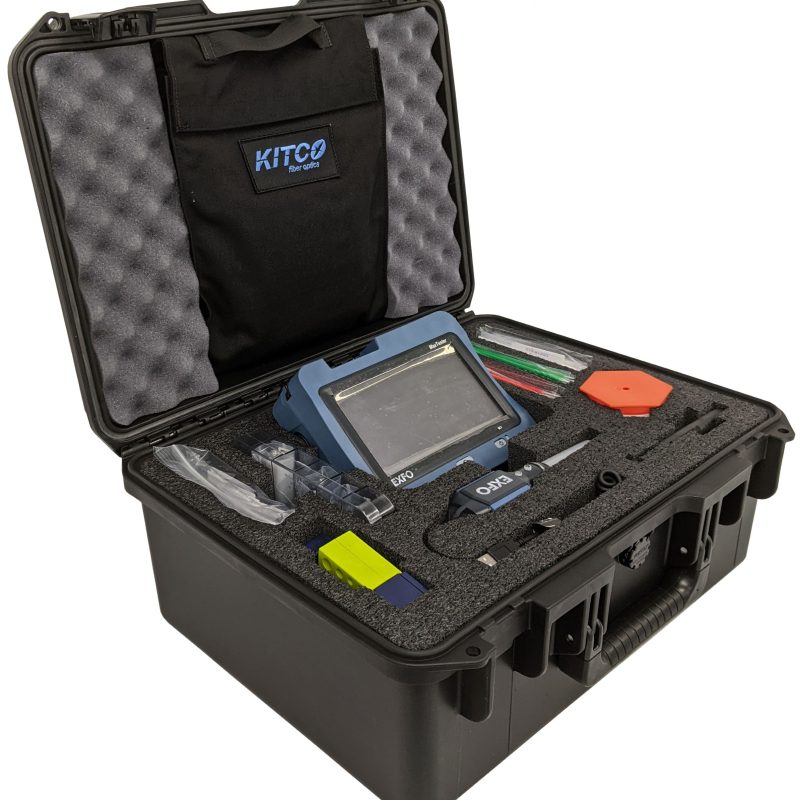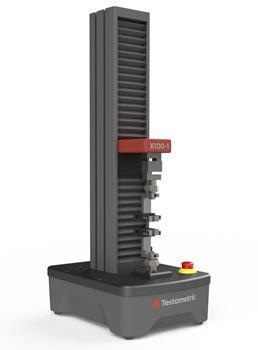Exploring Advanced Techniques in Fiber Measurement and Their Sector Impact
In today's textile sector, accurate fiber measurement is vital for optimizing manufacturing processes and conference sustainability goals. With the rise of ingenious imaging and analytical devices, you can acquire much deeper insights into fiber structure and structure. This shift not just enhances efficiency however additionally straightens with industry requirements. As these sophisticated techniques progress, you might ask yourself how they can additionally transform making techniques and influence the future of fabrics.
The Significance of Accurate Fiber Measurement in Textile Production

Cutting-edge Imaging Technologies for Fiber Analysis
When it comes to fiber analysis, cutting-edge imaging innovations are game changers. High-resolution microscopy methods and spectroscopic evaluation approaches provide you with comprehensive understandings right into fiber structure and structure. These developments not only enhance precision yet additionally enhance your dimension processes.
High-Resolution Microscopy Techniques
High-resolution microscopy strategies have actually reinvented fiber analysis, permitting scientists to envision fibers at unprecedented levels of detail. With approaches like scanning electron microscopy (SEM) and transmission electron microscopy (TEM), you can observe fiber morphology, surface features, and cross-sections with impressive clearness. These methods allow you to compare different fiber types and analyze their architectural stability. You'll locate that high-resolution imaging helps determine problems, inclusions, and other important qualities that can influence material performance. Innovations in digital imaging software have actually improved image handling, making it much easier to evaluate and translate information. By embracing these ingenious methods, you can drive better precision in fiber dimension and add to improvements in different industries, from textiles to composites.
Spectroscopic Analysis Approaches
Spectroscopic analysis techniques have arised as effective tools for fiber characterization, offering understandings that enhance high-resolution microscopy. You can make use of techniques like infrared (IR) spectroscopy, which helps determine the chemical make-up of fibers by measuring molecular vibrations. Raman spectroscopy offers one more layer of information, allowing you to evaluate molecular frameworks with scattering of single light. These methods not just improve your understanding of fiber properties however also enable the discovery of pollutants and architectural variations. By incorporating spectroscopic strategies with standard microscopy, you gain an extra comprehensive sight of fibers' physical and chemical characteristics, boosting your research accuracy. Eventually, these innovations can especially impact product selection and quality assurance in various sectors.
Advanced Analytical Equipment and Their Applications
As you discover the domain name of fiber dimension, you'll uncover that advanced analytical tools play an essential duty in enhancing accuracy and effectiveness. Methods like high-performance fluid chromatography (HPLC) and gas chromatography (GC) enable you to assess fiber structure with outstanding accuracy. These devices allow you to identify particular components and pollutants, ensuring high quality control in your products.Additionally, making use of scanning electron microscopy (SEM) provides you a comprehensive view of fiber framework, aiding you recognize exactly how various therapies impact performance. Modern software application also improves data analysis, making it less complicated to translate complicated results and work together across groups.

Effect of Fiber Measurement on Production Efficiency
While specific fiber measurement may appear like a small information, it significantly influences manufacturing performance in the textile sector. When you purchase accurate fiber measurement methods, you can maximize raw product usage and minimize waste. This causes far better resource allotment, allowing you to create top quality textiles without overusing resources.By understanding fiber characteristics, you can customize manufacturing processes find more information to certain products, improving your operations and decreasing downtime. For example, understanding the specific tensile strength of fibers lets you readjust equipment settings for maximum efficiency. This not just accelerates manufacturing but additionally guarantees consistent product quality.Moreover, exact fiber dimension assists you recognize concerns early in the assembly line, stopping pricey reworks and delays (fiber measurement). In general, applying advanced fiber measurement strategies streamlines operations, enhances efficiency, and eventually raises success. In today's open market, every detail counts, and exact fiber measurement is a game-changer
Sustainability Factors To Consider in Fiber Analysis Techniques
When you assess fiber, it's essential to contemplate sustainable methods that can decrease environmental influence. Making use of environmentally friendly dimension techniques and reducing waste in your evaluations can substantially enhance your total sustainability. In addition, integrating lifecycle evaluation into your techniques can provide a clearer image of your fiber's environmental impact.
Eco-Friendly Measurement Techniques
Taking into consideration the growing need for sustainability in various sectors, adopting green dimension techniques for fiber analysis has become necessary. You can begin by making use of non-toxic solvents and biodegradable materials in your testing processes. These options not only lower environmental effect however additionally improve safety and security for your team. Carrying out electronic measurement methods can further lessen waste, as they usually require fewer physical samples and resources. In addition, leveraging ingenious innovations like near-infrared spectroscopy can produce accurate results without damaging chemicals. By choosing these greener techniques, you add to an extra lasting future hop over to here while preserving high requirements in fiber top quality. Eventually, integrating environment-friendly techniques into your fiber analysis not only lines up with customer values but likewise boosts your brand's track record.
Decreasing Waste in Assessment
To successfully decrease waste in fiber analysis, you can implement strategies that improve your screening procedures and lessen source usage. Begin by maximizing sample sizes; making use of smaller sized examples can produce precise outcomes while saving products. Next, spend in multifunctional tools that enables for various tests without requiring several tools, lowering power and source usage. You ought to likewise take into consideration embracing digital devices for data collection and analysis, which can lower paper waste and boost efficiency. Regularly training your team on sustainable methods assures everybody's on board with waste decrease goals. Teaming up with suppliers who focus on sustainability can better boost your efforts, allowing you to analyze fibers while preserving a commitment to environmental obligation.
Lifecycle Analysis Integration
Integrating lifecycle analysis (LCA) into fiber evaluation strategies can significantly boost sustainability initiatives. By analyzing the environmental influences of fibers from production to disposal, you can recognize areas for improvement. This method aids you comprehend resource consumption, energy use, and waste generation throughout the fiber's life.When you incorporate LCA, you're not just gauging fiber features; you're likewise considering the environmental footprint. This holistic sight allows you to make educated decisions that prioritize sustainability. You might select fibers that require less sources or have a reduced carbon influence. Ultimately, LCA empowers you to maximize procedures, minimize waste, and advertise ecologically friendly selections in fiber manufacturing, straightening your experiment global sustainability goals.
Industry Specifications and Rules Shaping Fiber Measurement
As the need for high-grade fiber items grows, understanding the industry requirements and guidelines that govern fiber dimension becomes vital. These standards ensure uniformity, precision, and safety and their explanation security in the dimension procedure, which eventually affects item top quality. Organizations like ASTM International and ISO stated criteria that producers have to stick to, covering various elements such as fiber recognition, stamina testing, and moisture content analysis.

Future Patterns in Fiber Measurement and Textile Production
How will innovations in technology improve fiber dimension and fabric production? You'll see a change towards automation and real-time data analysis, boosting accuracy and effectiveness. Smart sensors will certainly keep an eye on fiber homes continually, permitting for prompt modifications in production. This implies you can anticipate better fabrics with less waste.Moreover, AI and device understanding will predict fads in customer preferences, enabling suppliers to adjust promptly. fibre testing equipment. By incorporating blockchain modern technology, you'll have much better traceability of products, ensuring sustainability and ethical sourcing.Virtual reality and boosted truth will play a role as well, providing immersive training experiences for employees on fiber handling and production processes.As you embrace these modifications, the fabric sector will transform right into an extra receptive, lasting, and innovative field, establishing brand-new standards for quality and performance. The future of fiber measurement and fabric manufacturing is bright, and it's time to obtain on board
Frequently Asked Questions
What Are the Many Typical Fiber Types Measured in the Market?
In the industry, you'll commonly run into all-natural fibers like cotton and woollen, as well as synthetic choices such as polyester and nylon. Each type has distinct homes, impacting their dimension and application in different products.
How Do Fiber Measurements Impact Consumer Product Top Quality?
Fiber measurements straight influence consumer product top quality by making sure uniformity, sturdiness, and performance. When you comprehend these metrics, you can make informed choices, resulting in enhanced contentment and better total experiences with the products you use.
What Training Is Needed for Fiber Dimension Technicians?
To become a fiber dimension service technician, you'll need specialized training in fabric science, dimension strategies, and equipment operation. Hands-on experience and qualifications can enhance your abilities, making you competent in exact fiber evaluation and quality guarantee.
Are There Any Type Of Certifications for Fiber Measurement Professionals?
Yes, there are certifications for fiber measurement professionals. You can seek alternatives like the Qualified Fiber Optics Service Technician (CFOT) or different industry-specific credentials that enhance your proficiency and credibility in fiber measurement and testing.
Exactly How Can Local Business Apply Fiber Dimension Techniques Efficiently?
You can carry out fiber measurement methods properly by buying budget friendly devices, training your group, and developing clear methods. Work together with market specialists and constantly refine your processes to enhance accuracy and performance gradually.